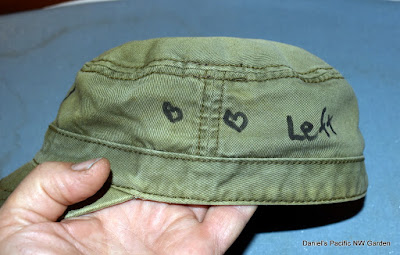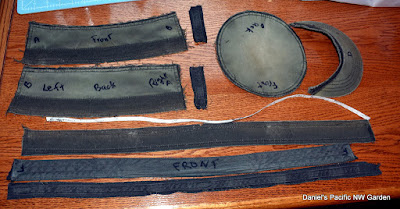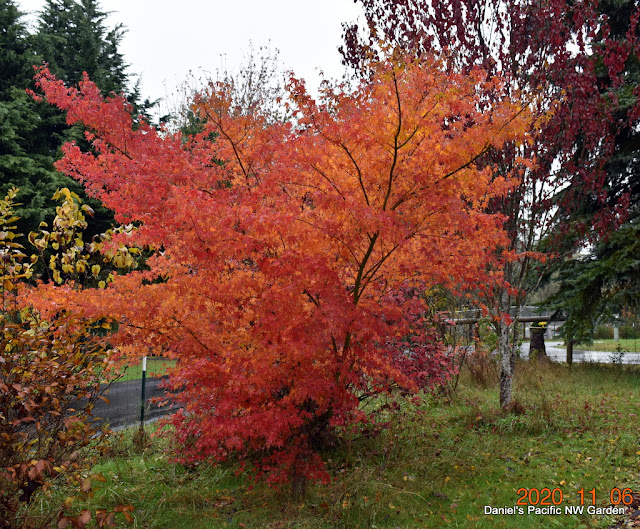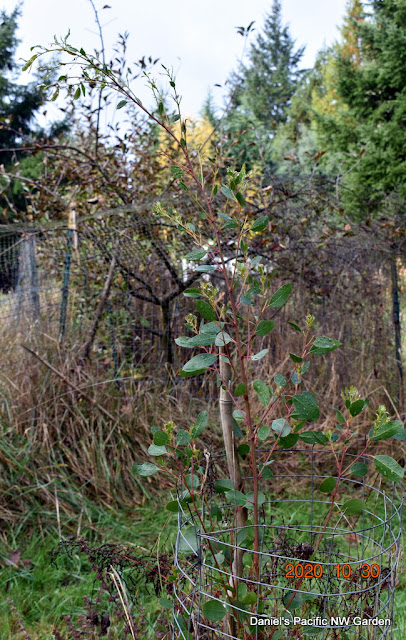I had some unused squares left over from a wall hanging quilt that I made last fall and winter. That was the first one that I ever made.
Since I didn't know anything about making a patchwork quilt, I started as simple as I could. I bought a package of 2 inch wide fabric strips in a roll, called a "jellyroll". Those can be nice to start out, because they include various colors and patterns in one roll up. On the other hand, one can buy a jellyroll and wind up with pieces that don't look right, or aren't wanted, and on the other hand have to add pieces.
In this case, I made a "split rail fence" pattern quilt. That involves three strips, 2 inches wide, sewn together into a square. The easiest way is to take 3 strips that are much longer, sew them side by side into one long strip, then cut across it every 6 inches. That will give 6 inch squares with a contrasting stripe in the center. For my original quilt. I either had dark center strip and light outer strip, or vice versa. They can be arranged in all sorts of ways. I wound up with 6 left over and put them into a box.
I wanted to improve my sewing skills, especially for making the next quilt. I decided to make some table mats, which are basically very tiny quilts. I thought the split rail blocks were too big for such a small item. Plus, there would only have been enough for one table mat, which isn't much. I decided to make something different, basically scrambling the split rail patches.
So, I made six more squares, mostly with brighter and lighter colors. Some of those were left over pieces from making face masks. In this case, I arranged them from dark to medium to light colors. That gave me 12 squares over all. Here are the 2 squares.
I thought those were too large to look good on small place mats. Plus, I wanted to experiment. So, I arranged the six original squares face up, and use the six new squares turning so the seams were at right angles to the first. I tried to make each combination different, but that wasn't completely possible with what I had.
Then I clipped the pairs together, and sewed all the way around with the good sides facing the inside.
Then, I cut corner to corner, both ways, on all of the squares.
Unfolding the cut pieces, and turning opposite corners of each square in the opposite direction looks like this.
That's an interesting pattern, with repeating shapes. However, they don't work out for the size and pattern that I wanted. So I scrambled the patches, turning them in various directions and trying not to have too many that were the same fabric adjacent to itself. Then I ironed them flat, and sewed the squares together to make two mats.
Now it's exactly the same as making a big quilt, except it's small. I sandwiched the new patchwork layer, cotton batting, and a cotton fabric backing. That backing was fabric that I bought last summer on Amazon to make masks, but it was way too flimsy, basically muslin (bad Amazon and bad seller!). But it's fine for the back side of these table mats.
Three things I learned since the last attempt. First, if the piecework top, the batting, and the backing are adhered together with washable spray adhesive, then there won't be wrinkles and everything stays together while being completed.
Second, I watched a lot of videos and learned the right way to do the binding, that border around the edges. It's not an obvious technique (to me), but really isn't hard at all.
Third, it turns out that the jelly roll strips are exactly the width needed to make binding strips. I didn't know that. There's probably a reason. That did give me some nice choices.
Here is how the table mats came out. I like some things about these. First, they are made from scraps of fabric, which is how patchwork quilts originated and is a nice tradition. I might have chosen some different patterns and colors if I had a big fabric bin to choose from, but I liked how these came out anyway Second, I like this scrambled split rail fence pattern. I'm sure it's been done zillions of times, but I didn't find a pattern so I made it up. It's fun to see the various patterns peeking from behind others, and see the contrasts in shapes, colors, and intensity. Third, I learned some new things. The mats will soften and puff up a little when they are washed.






















































